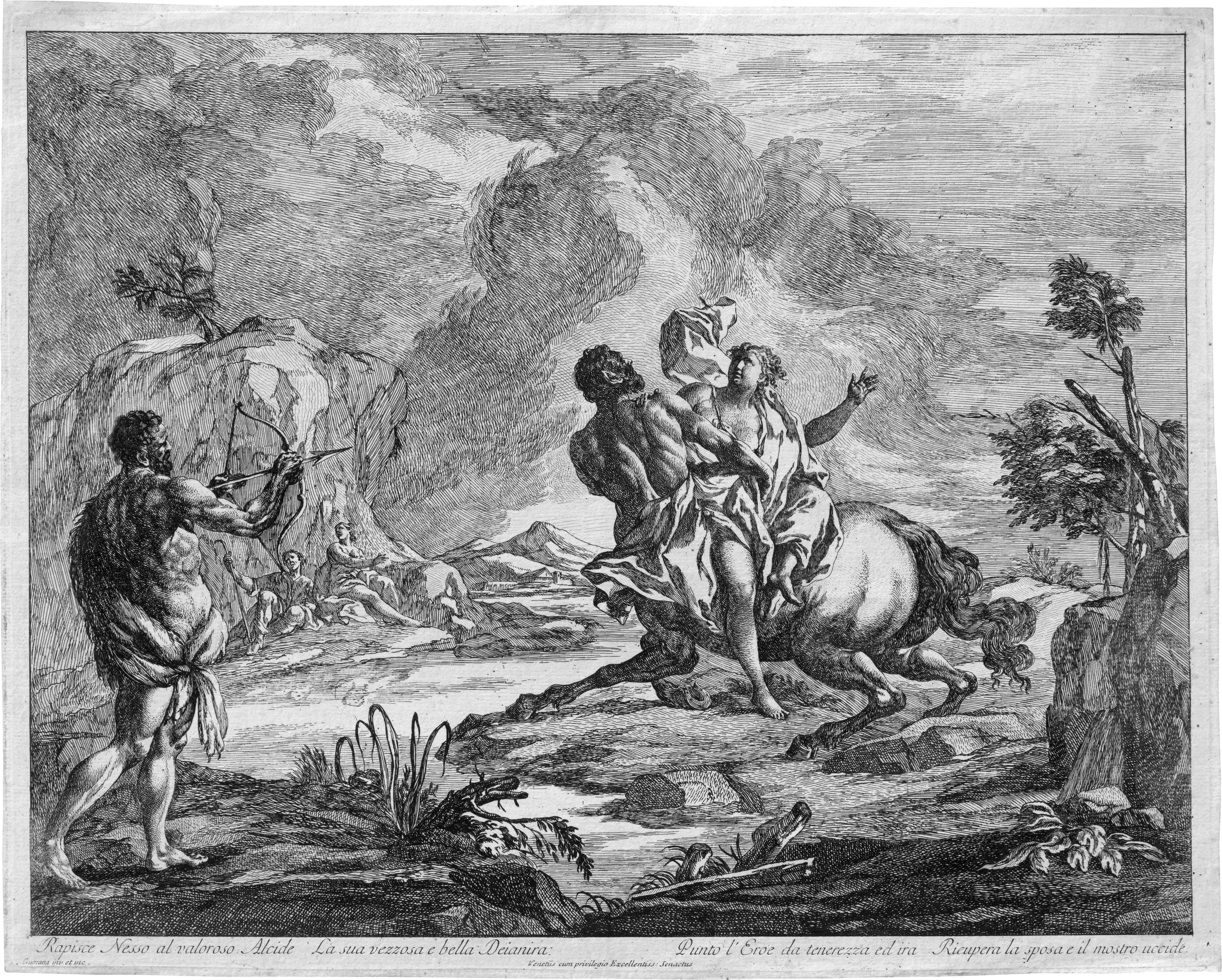Loading the page ...
Jacopo Guarana
(1720 Verona – 1808 Venice)
Hercules Kills Nessus. Etching. 38.2 x 48.5 cm. De Vesme 5 I (of II).
Jacopo Guarana lived from a very early age in Venice, where he was apprenticed to Sebastiano Ricci and Giambatista Tiepolo. He became a member of the Venetian painters’ guild in 1744 and was admitted to the Accademia di Pittura e Scultura in 1756. Initial large contracts for the Ca’ Rezzonico and the Scuola Grande di S. Giovanni Evangelista in the years that followed testify to the great artistic prestige he enjoyed. After a brief sojourn in St. Petersburg, where he executed a ceiling painting in the Winter Palace for Catherine II in 1762, he subsequently became the leading painter of frescoes for the Venetian nobiltà after Tiepolo’s departure for Madrid. Guarana’s most prominent works include his ceiling paintings in the chiesetta and the banqueting hall of the Doge’s Palace, the paintings for the Villa Pisani in Strà and, as his undisputed masterpiece, the illusionist paintings in the music room of the Ospedaletto, which he executed in 1776/77 together with the architectural painter, Agostino Mengozzi Colonna. Other important commissions were to follow, but the fall of the republic proved a dramatic turning-point in Guarana’s career, since the aristocracy and the clergy largely ceased to provide work. Hence Guarana spent the last years of his life in straitened circumstances and, following his death in 1808, his name and his fame soon fell into oblivion.
Guarana left a modest and rare printed oeuvre consisting of nine sheets. The appeal of this depiction of Hercules and Nessus stems from the tremendous drama of the scene and its pictorial expressiveness. Guarana’s powerful, very vigorous etching technique contributes significantly to this impression. The plate is deeply etched, which produces a dramatic chiaroscuro effect. Of striking beauty is the linear play of the very varied and sophisticated hatching patterns, which are used contrapuntally and create a graphic surface pattern of great vitality. Venetian etching of the Settecento reaches an impressive peak here. Hence it is all the more disconcerting that Guarana’s printmaking oeuvre soon fell into oblivion. A superb, contrasting early impression with thread margins around the platemark; before the address of Marco Pelli.
Contact us for further information